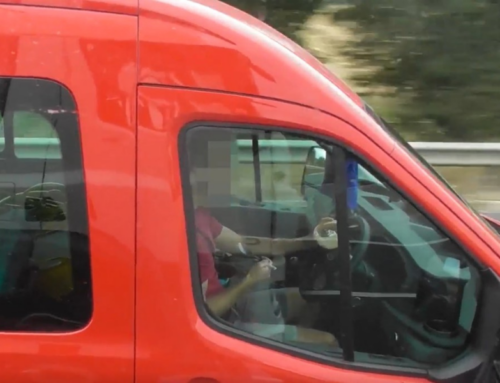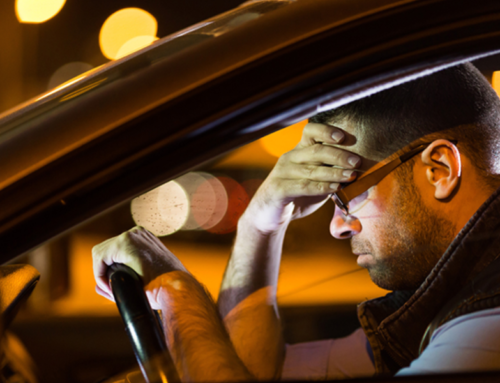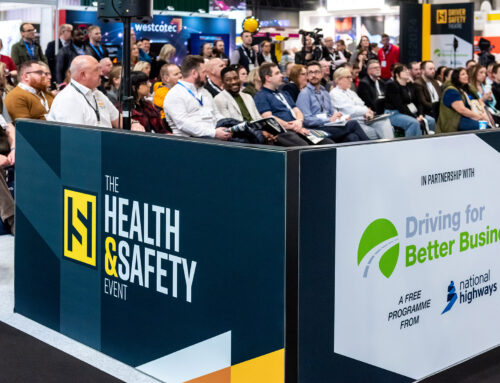The World Cup and Driver Behaviour
As the country’s thoughts turn to the upcoming World Cup, what should fleet managers and those who employ and manage drivers be aware of, when it comes to the potential effects on those who drive for work?
We were interested to hear recently that Travis Perkins plc, who operate over 2,400 delivery vehicles under a range of brands (including Travis Perkins, Toolstation, BSS, CCF and Keyline), are actively managing the associated increased road risk that comes with this major event.
Fleet Managers – what needs to be communicated to drivers?
Learning from previous experience of major sporting events, Travis Perkins plc have actively managed the conversation with managers and drivers across their business units to make everyone aware of the heightened risks.
From holding a nation-wide safety stand down in Travis Perkins merchanting, to relaunching their drug and alcohol policy, Travis Perkins plc are working to ensure all of their colleagues, customers and suppliers are safe during this period. With weekly driver communications, colleagues will have the opportunity to call out anything they are concerned about, have the opportunity to check on each other’s wellbeing, and have up to date information available to them through new e-learning courses.
Travis Perkins plc also shared their experience on how driver behaviours can significantly vary, depending on the success or otherwise of the home nations. Keeping an eye on the results might help Fleet Managers to be proactive in some of these conversations around driver safety.
What factors will affect your drivers?
Another important factor is that this event is being held in Qatar, and so matches are being played from 9am onwards, which may also affect driver’s behaviour and decision making during the working day.
It has also been reported that domestic abuse rises during these types of events and offences linked to alcohol use and heightened emotions also increase. Reports of domestic abuse rise after football matches with researchers suggesting that binge drinking is the key factor, with alcohol-linked violence against live-in partners happening more often on match days.
Operation Limit – crack down on drink and drug driving
As the tournament kicks off, we will also see the launch of Operation Limit, a nationwide crackdown on drink and drug driving which will see all of 43 UK police forces increase efforts to catch drink and drug drivers. The 6-week long campaign which coincides with the World Cup and Christmas period is being coordinated by the National Police Chiefs’ Council (NPCC) and National Roads Policing Operations and Intelligence (NRPOII). It’s objective is to reduce serious injury and death, and disrupt criminal activity on the UK road network by targeting those who engage in high-harm behaviour, specifically driving a vehicle while under the influence of drink and/or drugs.
The initiative comes as statistics recently released by the Ministry of Justice (MOJ) indicate that 206 drug and drink driving offences are committed every day in England and Wales – a total of 75,159 offences.
The newly published data highlights that convictions for drug driving have more than trebled over the past five years from 7,683 in 2017, to 27,962 by the end of 2021. Worryingly, there has also been a 13% growth in drink driving cases in the past year, with 33,742 motorists appearing in court in 2021.
Are your Drivers over the limit the morning after?
Knowsley Council’s Road Safety team is highlighting the dangers of driving the morning after drinking alcohol, as some drivers may not realise they are still over the legal limit.
Many people will enjoy a few drinks as they watch the football, and most wouldn’t even consider getting into their car and driving afterwards. However, there is a real risk that people who would never deliberately drink and drive may still be over the limit, or unfit to drive, the ‘morning after’, and that includes commercial drivers.
This is because it takes a lot longer than most people think for alcohol to pass through the body. On average it takes around one hour per unit of alcohol, though this can vary depending on a number of factors. The decision to get behind the wheel of a vehicle the morning after drinking can have very serious consequences, not only for the driver but also potentially for other road users around them, and so it is key that fleet managers are proactive. They need to be able to communicate the dangers and manage the risk as far as possible in advance. Our Drink Driving Module in the Van Driver Toolkit has some helpful resources for those who manage drivers to share with their employees.
Drink Driving – what commercial drivers need to know
Paul Mountford, Merseyside Police Lead for drink and drug driving, said: “Merseyside Police will be conducting numerous roadside operations and breath and drug testing hundreds of drivers throughout this campaign to ensure that drivers understand the principles of this campaign – that the only safe drink drive limit is zero.
“Many drivers are unaware that even a small amount of alcohol may affect their driving ability, placing themselves at an increased risk of a crash and arrest. They may be arrested for ‘drink driving’ even if they pass a breathalyser if the officer considers them to be unfit. This is particularly relevant the following day when many will not consider their driving fitness after a night’s sleep.”
Drug Driving – driving for work
Ean Lewin, Managing Director of D.tec International, the UK’s sole distributor of DrugWipe, the global leader for police roadside driver drug screening, used by all 43 police forces in England, Wales and Scotland as well as hundreds of corporate clients said;
“It is expected that statistics for 2022, which will not be available until midway through next year, will show that drug driving is now more prevalent in society than drink driving.”
With this worrying increase, how do you address drug driving in your driving for work policy? What information do you share with your drivers? Our Van Driver Toolkit includes a module on Drug Driving which you may find helpful.
The Morning After Calculator
The ‘Morning After’ calculator helps you to add up the drinks you consumed the night before and gives you a rough calculation of when you may be safe to drive – so it may be another useful tool to share with your drivers.
Visit morning-after.org.uk for more information.






